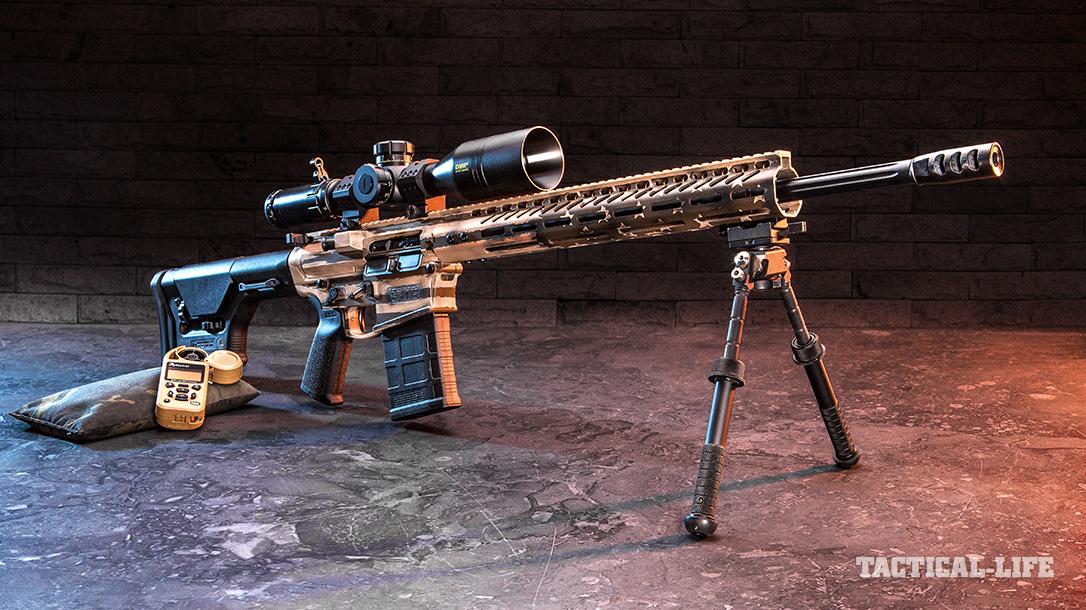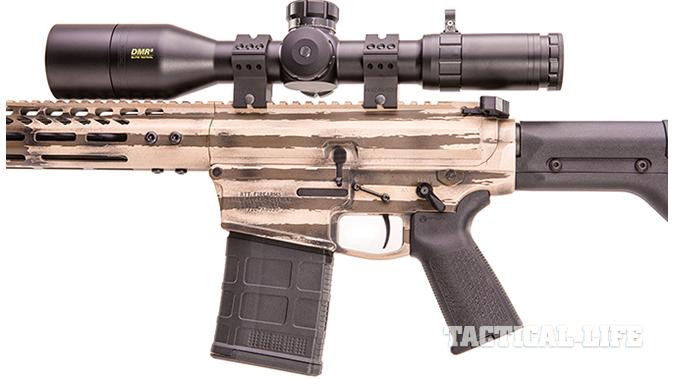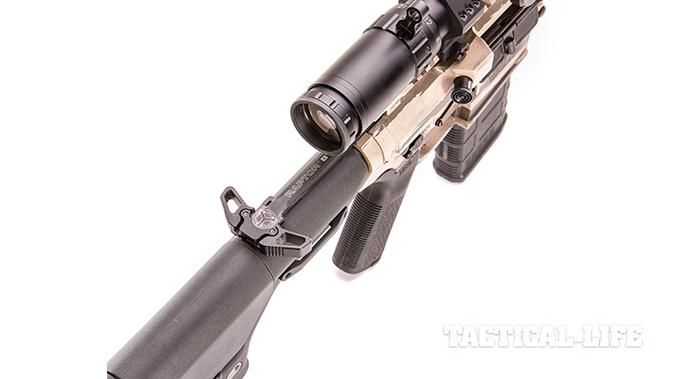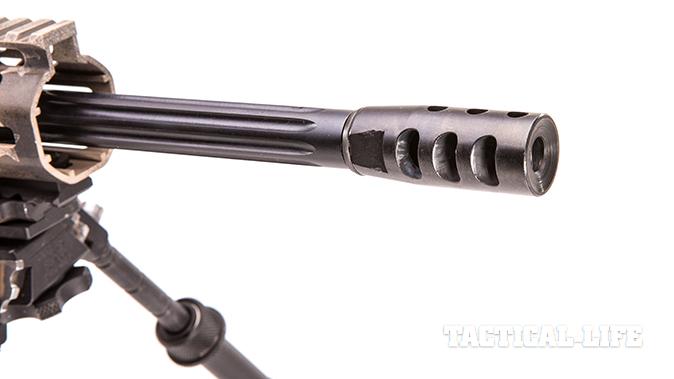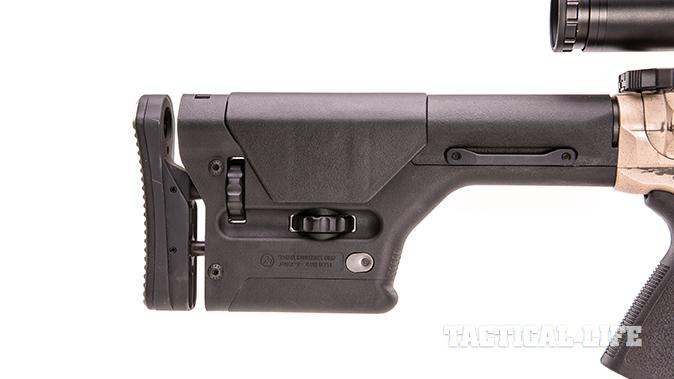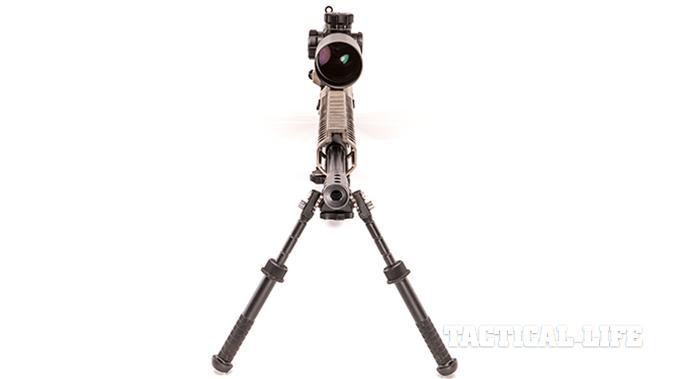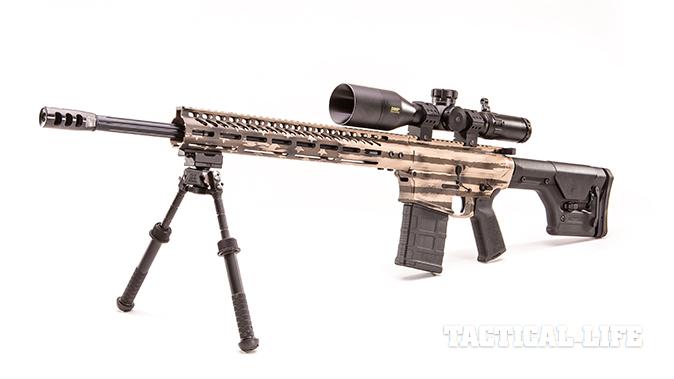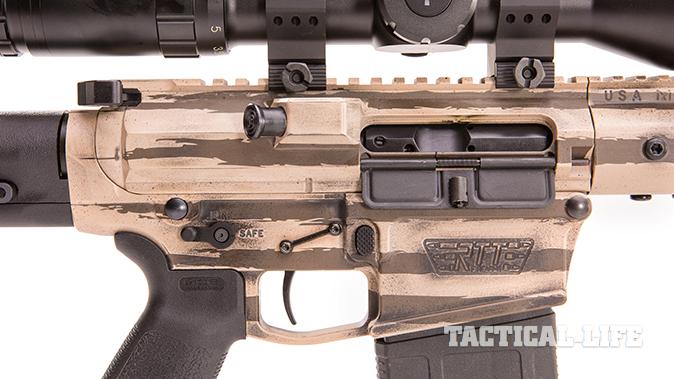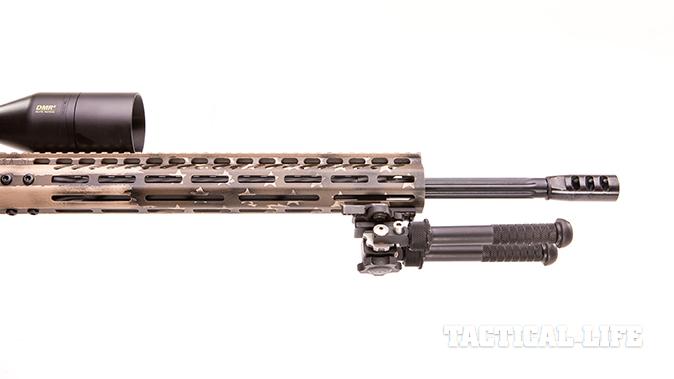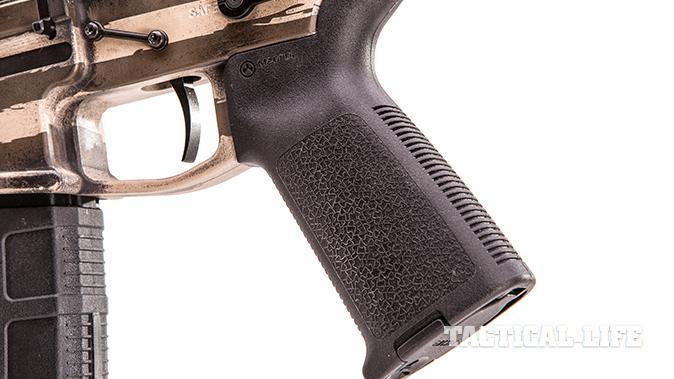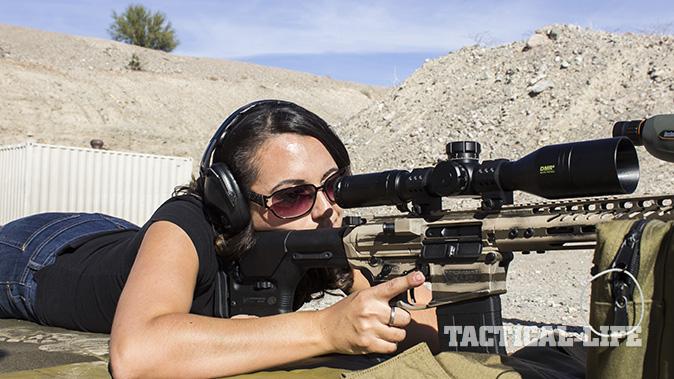There is a unique truth behind some of the most successful companies of all time. Many of them launched their plans from a very small space and, in some cases, even a garage. Many modern-day moguls once had to balance workspace with storage for their kids’ bikes. They persevered, though, and went in steps from the garage to a small office and so on.
While this is a common thread in areas such as technology, it is also a reality in other businesses, including the firearms industry. Rare is a company that has sufficient room and funding to “be all they can be” right out of the box. It is a long process that will test the commitment and dedication of any business owner. But if they stay focused and work relentlessly, they will be rewarded with success.
One of the best examples of this formula is a small but successful rifle manufacturer in Western Arizona. RTT Firearms is an American success story, and the flagship of that success is the RTT-10 SASS precision rifle chambered for .308 Winchester/7.62mm NATO rounds.
Advertisement — Continue Reading Below
Plenty Of SASS
There seems to be no shortage of companies building AR-platform rifles in a variety of calibers. I know because I have penned countless articles on these types of gun. At times, it is a bit difficult to get excited about yet another AR in any caliber, so it was a refreshing moment when I met the team at RTT Firearms and got a look at the RTT-10 SASS. Their enthusiasm about the gun was unbridled. Upon first inspection, the gun passed muster as having potential. The RTT-10 SASS is the company’s take on Eugene Stoner’s AR-10, which many of you know emerged before the AR-15.
I have been a fan of precision semi-autos in .308 Winchester simply because they can be run very quickly. AR-platform controls are familiar to a majority of shooters, and given a good design and build, they are reliable weapons. The designers at RTT Firearms looked hard at the design of the AR platform and made the decision to improve on it.
The RTT-10 SASS begins with upper and lower receivers made from a billet of 7075-T6 aluminum. The barrel is a heavy, fluted, 20-inch, 416R stainless steel QPR model from Faxon Firearms. It is button rifled with a 1-in-10-inch twist rate, and the muzzle is cut with 5/8-24 threading for brakes and suppressors. Managing the gas is the RTT Low Pro gas block and rifle-length gas tube. The handguard is a billet-crafted, 15-inch, free-floating design made of 6061-T6 aluminum. Free of harsh edges, it is cut for M-LOK accessories. Tying it all together is a bomb-proof steel barrel nut. The bolt carrier group includes a magnetic-particle (MP) inspected bolt with dual ejectors. Rounding out the upper, RTT wisely chose the popular and reliable Raptor ambidextrous charging handle from AXTS.
Advertisement — Continue Reading Below
The lower is machined for standard DPMS .308 components and magazines, and has an integral triggerguard. RTT has also included its own tuned and polished rifle buffer and spring, and installed Magpul furniture, including a PRS stock and MOE grip. A 20-round PMAG is also included.
One of the most important pieces of any rifle is the trigger. RTT made another good choice here with the KE Arms DMR, which is a 4.5-pound, adjustable- reset trigger with minimal take-up and overtravel and a short reset. Precisely cut from A2 tool steel, this trigger is very smooth to run. While some prefer feather-weight triggers, the choice of a 4.5-pound version pleased me greatly. This was never designed to be a benchrest gun, and the trigger fits the RTT-10 SASS’ application well. The company also installs an ambidextrous, short-throw safety selector from KE Arms.
Driving Tacks
As with many things in life, the RTT-10 SASS may look good on paper, but the proof is in its performance. The rifle I received for testing included a custom two-tone, distressed-flag Cerakote finish that I thought was a great touch. For targeting, I mounted a Bushnell 3.5-21x50mm Elite Tactical DMR II scope with an illuminated G3i reticle. This is an exceptional piece of glass that ended up serving me well here.
Advertisement — Continue Reading Below
After adjusting the Magpul PRS stock’s length of pull and cheek height, the rifle was ready to roll. To measure the rifle’s accuracy with five-shot groups, I utilized a bench and improved my consistency by adding a bipod and a rear sand sock to the equation for stability. After a quick zeroing and target reset, rounds quickly began to fly downrange.
Two major items became evident almost immediately. First, the trigger on the RTT-10 SASS is as nice as I had hoped. It’s perfect for a professional-grade rifle, and it broke cleanly at just over 4 pounds. Second was the minimal muzzle rise due to RTT’s choice of muzzle brake as well as the weight of the rifle. These factors not only allow for accurate shooting, but also faster follow-up shots. It was easy to stay on the scope and prepare for my next shot. This is one of the benefits of shooting a semi-automatic rifle in comparison to a bolt gun. While I have seen some run a bolt like a rifle ninja, most people have to come off their scopes to cycle the bolt, thus breaking their shooting position. The adjustable stock was also a nice feature, and it greatly contributed to the rifle’s overall accuracy.
For posterity and data, I fired five-shot groups at 100 yards with match-grade loads from Black Hills, Federal and Remington. Even with the very minimal barrel break-in period, the RTT-10 SASS proved it was as accurate as advertised. All of the groups flirted with sub-MOA, but the Federal rounds punched in at just over 0.75 MOA. This accuracy continued as targets changed from paper to steel and moved farther and farther out. I ultimately ran out of range at 800 yards, but the RTT-10 SASS was still shooting flawlessly. The steel target developed one central gray spot as rounds continued to strike in the same area.
Advertisement — Continue Reading Below
Of course, the RTT-10 SASS is not a benchrest rifle, so it was important to run it from a variety of shooting positions, from prone to kneeling as well as off-hand. In each instance, the rifle ran well and provided solid accuracy. No, it’s not a lightweight shooter, but it was still very easy to manage at the range.
The ability for a rifle to be fired from a variety of positions is an essential part of serious applications. Very few real-world shots are ever taken from a prone or benchrest position. In lethal applications or even competition, shooters are often required to shoot from odd angles and improvised positions. The weight and accuracy of the RTT-10 SASS make it a solid fit for these applications. While rifles can sometimes be too big to wield, that simply isn’t the case here. Rifles must be easy to manage and quick to bring into position. The RTT-10 SASS met this requirement easily.
Professional Grade
The RTT-10 SASS is a serious rifle, and it’s easily a good fit for long-range applications. It handled well, shot well and, most importantly, did it all without any malfunctions. While this may sound like an obvious point, it is one that frustrates many shooters running guns from young companies. Rare are the shops that can reliably produce rifles that provide all three of these things without the gun going back for some tuning.
Advertisement — Continue Reading Below
While the few hundred rounds I put through the RTT-10 SASS cannot be considered a true durability test, I was very pleased with the rifle’s overall performance. The world of emerging gun builders, in my mind, is like a small locomotive working to get up a hill. It is exceptionally hard to do, but for those select few, success begins to fuel the engine. With the RTT-10 SASS, RTT Firearms is certainly the little engine that did.
RTT-10 SASS Specs
| Caliber: 7.62mm NATO |
| Barrel: 20 inches |
| OA Length: 41 inches |
| Weight: 8.5 pounds (empty) |
| Stock: Magpul PRS |
| Sights: None |
| Action: Direct impingement semi-auto |
| Finish: Two-tone Cerakote |
| Capacity: 20+1 |
| MSRP: $1,999 |
RTT-10 SASS Performance
| Load | Velocity | Accuracy |
|---|---|---|
| Black Hills 168 Match BTHP | 2,650 | 0.80 |
| Federal 138 Gold Medal Match | 2,650 | 0.75 |
| Remington 175 Premier Match | 2,609 | 0.90 |
*Bullet weight measured in grains, velocity in fps by chronograph and accuracy in inches for best five-shot groups at 100 yards.
This article was originally published in “Tactical Weapons” November/December 2017. To order a copy and subscribe, visit outdoorgroupstore.com.
Advertisement — Continue Reading Below
